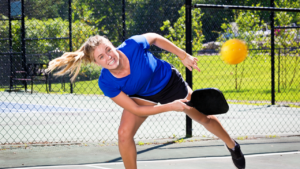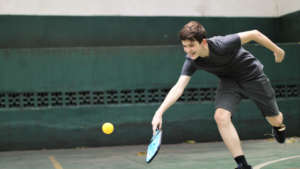With the speed of a hummingbird and the precision of a sniper, pickleball players aim to outwit their opponents in a thrilling game that combines elements of tennis, badminton, and ping pong. Within this fast-paced sport, one strategic move stands out as a true game-changer: the cross-court pickleball shot. In this deep dive into tactical pickleball maneuvers, we explore the artistry and cunning behind cross-court shots, revealing the secrets behind their success and the ways in which they can turn the tide of any match. So grab your paddle and get ready to delve into the intricacies of this captivating stroke that has players strategizing, lunging, and defying the odds on the pickleball court.
Table of Contents
- The Importance of Cross-Court Pickleball Shots
- Understanding the Mechanics and Strategy of Cross-Court Shots
- Mastering the Art of Placement: Strategic Tips for Cross-Court Shots
- Exploiting Opponent’s Weakness: Targeted Cross-Court Shot Tactics
- The Perfect Blend: Amalgamating Power and Precision in Cross-Court Pickleball Shots
- Q&A
- The Way Forward
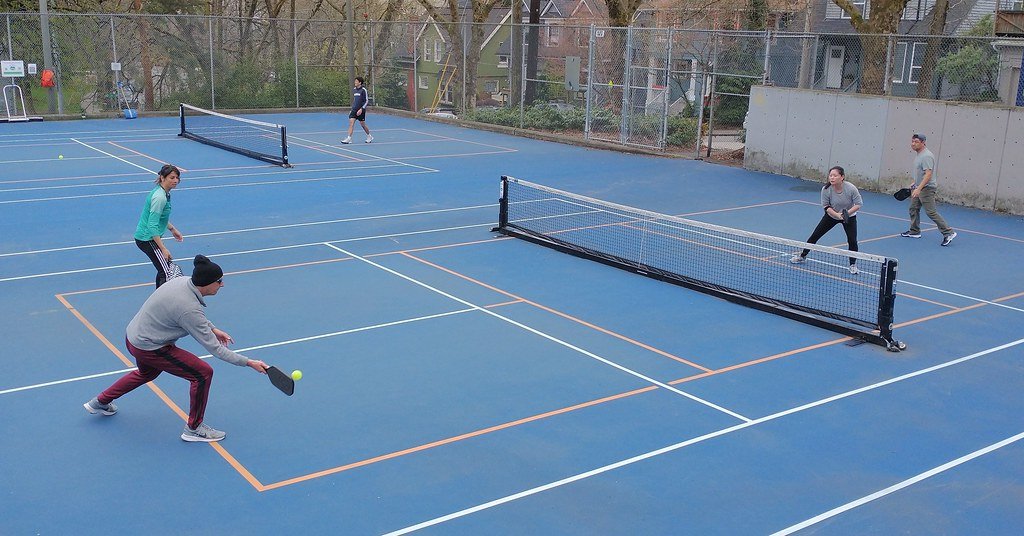
The Importance of Cross-Court Pickleball Shots
Pickleball, a delightful mix of tennis, badminton, and ping pong, has taken the world by storm. Within this exciting sport, there is a hidden gem that often goes unnoticed—the cross-court pickleball shot. Why is it so important, you may wonder? Let’s dive into the reasons:
1. Exploiting the Opponent’s Weakness: By strategically maneuvering the ball across the court, you can exploit your opponent’s weaker side. As the shot travels diagonally from one corner to the other, it forces your rival to adjust their positioning rapidly, increasing the chances of an error. In addition, a well-placed cross-court shot can challenge your opponent’s agility, requiring them to cover more ground and potentially leaving them vulnerable for your next move.
2. Expanding the Playing Field: The cross-court shot effectively stretches the playing field, creating wider angles and forcing your adversary to cover more distance. The ball’s diagonal trajectory makes it challenging for opponents to anticipate and quickly react, increasing the odds of catching them off-guard. By frequently utilizing cross-court shots, you can vary your game and keep your opponent guessing, setting yourself up for a stronger offensive attack.
3. Building Opportunities for Collaboration: In doubles play, the cross-court shot is an invaluable tool for establishing collaboration between partners. By consistently distributing cross-court shots, you can open up opportunities for your partner to take advantage of weak spots in the opponent’s defense. This coordination not only strengthens your communication but also creates a seamless transition between shots, making it harder for the opposition to defend against your combined efforts.
Mastering the art of the cross-court pickleball shot is a game-changer. It elevates your gameplay, creates strategic advantages, and adds a thrilling element of surprise to each rally. Next time you step onto the pickleball court, remember the importance of this shot and watch as your opponents scramble to keep up with your clever tactics.
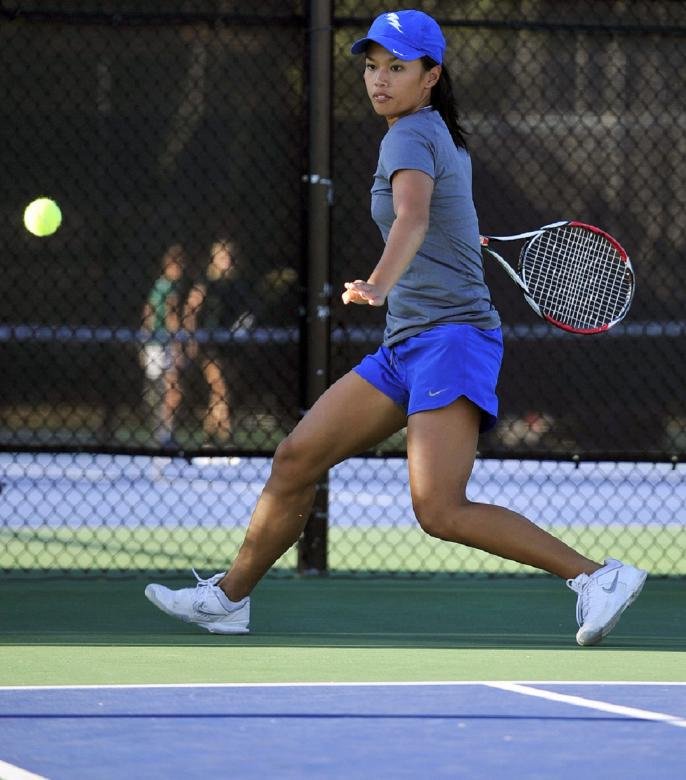
Understanding the Mechanics and Strategy of Cross-Court Shots
Mastering the art of cross-court shots can give any aspiring tennis player a significant edge on the court. This strategic maneuver involves hitting the ball diagonally from one side of the court to the opposite side, often requiring precise technique and anticipation. Understanding the mechanics behind this shot and implementing a well-thought-out strategy can greatly enhance your overall game.
Key Mechanics:
- Footwork: Proper footwork is crucial for executing cross-court shots effectively. Position yourself quickly and maintain balance to generate power and accuracy.
- Racket preparation: Ensure a solid grip and a well-prepared racket face to make the shot with precision. Anticipate the incoming ball and be ready to adjust your position as needed.
- Aiming: Focus on hitting the ball towards the deep part of the opposite court, allowing you to open up the angles and create more opportunities to outmaneuver your opponent.
Strategic Considerations:
Implementing an effective strategy while executing cross-court shots can significantly enhance your chances of winning points. Consider the following:
- Change of direction: Utilize cross-court shots to force your opponent to change direction and cover more ground, creating opportunities to exploit open spaces on the court.
- Mix it up: Vary your shots by combining cross-court shots with down-the-line shots, drop shots, or lobs. This versatility will keep your opponent guessing and off-balance.
- Patience and timing: Cross-court shots often require patience and well-timed execution. Wait for the right moment to hit the ball with proper technique, maximizing the effectiveness of your shot.
By understanding the mechanics and employing an intelligent strategy, you can utilize cross-court shots to take control of the game, force errors from your opponent, and create opportunities to dominate the court. Remember, practice and experimentation are key in refining this skill and integrating it seamlessly into your overall game plan.
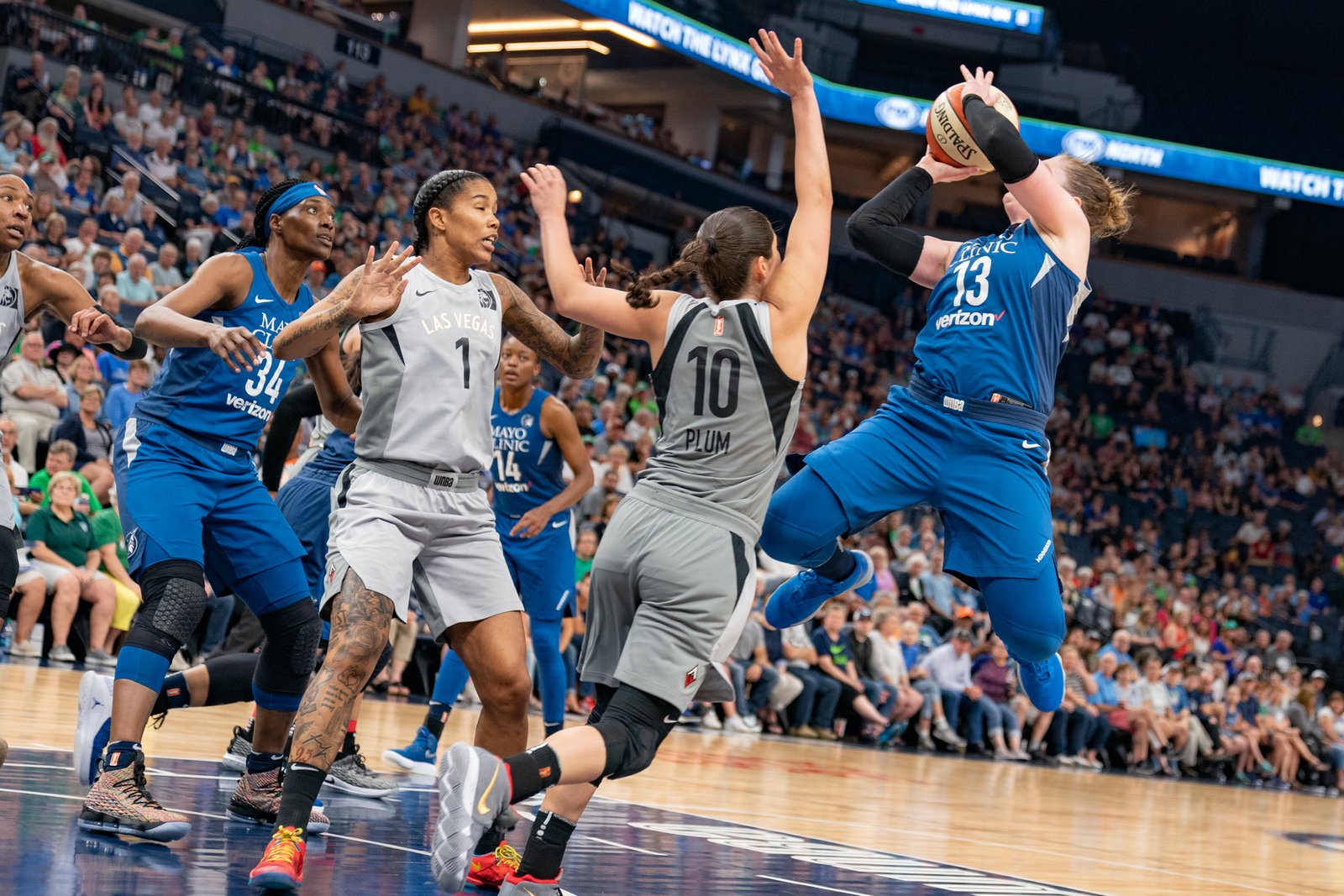
Mastering the Art of Placement: Strategic Tips for Cross-Court Shots
When it comes to tennis, mastering the art of cross-court shots can give you a great advantage over your opponents. These shots allow you to rally and dictate the flow of the game, putting your opponent on the defensive. Here are some strategic tips to help you improve your cross-court shots and take your game to the next level:
- Observe the court: Before attempting a cross-court shot, take a moment to analyze the court. Identify the open spaces and the areas where your opponent is vulnerable. This will help you determine the best placement for your shot and increase your chances of success.
- Use proper footwork: Footwork plays a crucial role in executing a successful cross-court shot. As you prepare to hit the ball, position yourself with an open stance and shuffle your feet to align your body towards the desired target. This will provide you with a solid foundation and enable you to generate sufficient power and accuracy.
- Control your racket face: Keep in mind that the angle of your racket face greatly influences the direction of your shot. To execute a cross-court shot, angle your racket face slightly towards the opposite side of the court. By doing so, you’ll be able to generate the necessary angle and create more space for the ball to land within the boundary lines.
- Vary your shot selection: Don’t become predictable with your cross-court shots. Mix it up by occasionally hitting a deep cross-court shot to push your opponent behind the baseline, or aim for a shorter cross-court shot to catch them off guard. By mixing up your shot selection, you’ll keep your opponent guessing and maintain the element of surprise in your game.
By implementing these strategic tips, you’ll be on your way to mastering the art of placement and dominating the court with your cross-court shots. Practice these techniques consistently, and watch your opponents struggle to keep up with the precision and power of your shots.
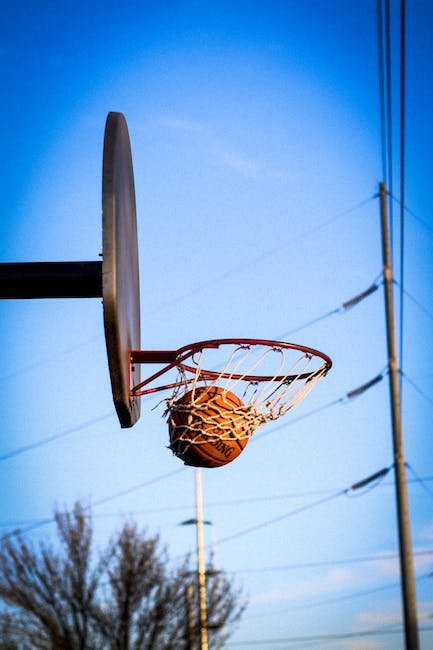
Exploiting Opponent’s Weakness: Targeted Cross-Court Shot Tactics
Targeted Cross-Court Shot Tactics can be a powerful strategy to exploit your opponent’s weaknesses on the tennis court. By utilizing this strategic approach, you can strategically place your shots in a way that puts pressure on your opponent and increases your chances of winning points.
One effective tactic is to identify your opponent’s weaker side and target it with well-placed cross-court shots. By consistently hitting the ball diagonally across the court, you force your opponent to move quickly and cover more ground. This can be especially advantageous if your opponent struggles with their footwork or lacks agility.
Another aspect of this tactic is to alternate the pace and spin of your shots. Mix up the speed and spin of your cross-court shots to keep your opponent off balance and make it difficult for them to anticipate your next move. This can be a game-changer, as it forces your opponent to adjust on the fly and may lead to more errors on their part.
In addition to targeting your opponent’s weakness, it is crucial to maintain a high level of consistency and accuracy with your shots. Aim for the corners of the court to push your opponent out of their comfort zone and force them to make difficult returns. Remember, the key to successfully exploiting your opponent’s weakness lies in your ability to execute these targeted cross-court shots with precision and control.
In summary, the targeted cross-court shot tactics can be a potent weapon in your arsenal. By identifying and attacking your opponent’s weaker side, alternating your shot’s pace and spin, and maintaining consistency and accuracy, you can gain a significant advantage on the tennis court and increase your chances of securing victory.
The Perfect Blend: Amalgamating Power and Precision in Cross-Court Pickleball Shots
Amalgamating Power and Precision:
When it comes to cross-court pickleball shots, the perfect blend of power and precision can be the ultimate game-changer. This strategic maneuver requires players to strike a delicate balance between the force behind their shots and the accuracy with which they place the ball.
By harnessing the raw power within their muscles, players are able to generate enough force to send the ball effortlessly sailing across the court. The kinetic energy released from their paddle creates a mesmerizing display of strength, captivating both opponents and spectators alike.
However, power alone is not enough to secure victory in the game of pickleball. Without precision, a powerful shot can easily be thwarted by a well-positioned opponent. It is here that the true artistry of the cross-court pickleball shot unveils.
Successful players understand the importance of precise ball placement. Their seemingly effortless strokes send the ball gliding towards the far corners of the court, leaving their opponents scrambling to respond. Whether it’s exploiting a weak spot in their opponent’s defense or executing a strategic maneuver to gain advantage, the precision of the shot sets the stage for triumph.
To master the art of the cross-court pickleball shot, aspiring players must strike a delicate balance between power and precision. It requires hours of practice, fine-tuning their muscle memory to unleash the perfect blend of force and accuracy. When executed flawlessly, this skill can become a potent weapon in their arsenal, propelling them towards victory with every swing of the paddle.
So, next time you step on the pickleball court, remember the perfect blend of power and precision that lies within your grasp. Fuse these two elements together, and watch as your cross-court shots become a force to be reckoned with.
Q&A
Why are cross-court pickleball shots important in the game?
Cross-court pickleball shots are vital because they create angle and depth, making it challenging for opponents to return the ball effectively. They allow players to control the game and keep their opponents on their toes.
What are the main advantages of using cross-court shots?
Using cross-court shots can surprise opponents, forcing them to move laterally and potentially create openings for easy winners. These shots also reduce the risk of hitting directly at opponents, minimizing their chances of counter-attacking aggressively.
How can players effectively execute cross-court shots?
Players should focus on proper footwork, positioning themselves slightly behind the ball, and utilizing a smooth swing. Aim for a low-to-high contact point, generating topspin for better control. Practice, patience, and anticipation are key to honing this technique.
What should players consider while attempting cross-court shots?
Players must evaluate their opponent’s position on the court, their own court coverage, and the angle required to execute a successful shot. Additionally, considering the speed and spin of the incoming ball can help players anticipate how to redirect it effectively.
Are cross-court shots suitable for every situation?
While cross-court shots are often beneficial, there are specific situations where they may not be advantageous. For instance, when the opponent is positioned near the sideline, hitting directly down the sideline can be a better strategic choice than playing cross-court.
Can cross-court shots be used as a defensive strategy?
Absolutely, cross-court shots can be employed defensively to neutralize aggressive opponents. By directing the ball to the opposite side of the court, players can create distance, buying time to regain control or recover from a defensive position.
What are some common mistakes players make when attempting cross-court shots?
Common mistakes include failing to adjust the aim according to the court’s dimensions, hitting too flat resulting in an easier return, or using excessive power instead of employing controlled placement. Lack of accuracy and consistency can also undermine the effectiveness of cross-court shots.
Any tips to maximize the effectiveness of cross-court shots?
Players should practice various shot selections, aiming for consistency in placement and depth. Developing versatility in cross-court shots, including low drives and soft dinks, can keep opponents guessing and add unpredictability to the gameplay. Assessing opponents’ weaknesses and exploiting them through cross-court shots can also be highly effective.
The Way Forward
As we conclude this deep dive into the world of cross-court pickleball shots, we hope that you have gained valuable insights and a renewed appreciation for the strategic intricacies of this exciting sport. From learning about the different types of cross-court shots to understanding their tactical implications, it is evident that mastering this aspect of the game can truly elevate your performance on the court.
Remember, the cross-court shot is not just a powerful weapon to sail the ball past your opponents; it is a chess move that requires calculated thinking, precision, and effective execution. By developing your foresight and adapting to the ever-changing dynamics of each rally, you can navigate the court with finesse, frustrating your rivals and carving your path to victory.
As you embark on your journey to enhance your pickleball prowess, we encourage you to put your newfound knowledge into practice. Experiment with various angles, velocities, and spin combinations to keep your opponents guessing. Immerse yourself in the art of anticipation and timing, allowing your cross-court shots to dictate the pace of the game and maintain control.
Of course, it is essential to remain mindful of your opponents’ strategies and adapt accordingly. Analyzing their footwork, reaction speeds, and court positioning will be key in exploiting their weaknesses and unleashing well-placed cross-court shots that leave them scrambling to respond. Remember, knowledge is power, and understanding your adversaries’ tendencies is the gateway to triumph.
As you delve further into your pickleball journey, always embrace the joyful spirit of this beloved sport. Let the thrill of each cross-court shot invigorate you, pushing you to excel with every swing of your paddle. Appreciate the beauty of the game and the camaraderie it fosters, for pickleball is not merely about winning but the unforgettable moments shared with fellow enthusiasts.
In closing, we hope that this deep dive into cross-court pickleball shots has equipped you with the tools and inspiration to take your game to new heights. Whether you’re a seasoned player seeking to refine your skills or a novice ready to make your mark on the court, remember that practice, dedication, and an imaginative approach will ultimately make you a force to be reckoned with. So go forth, unleash those cross-court shots, and let the game unfold in all its glorious intensity. Happy pickleballing!
As an affiliate, my content may feature links to products I personally use and recommend. By taking action, like subscribing or making a purchase, you’ll be supporting my work and fueling my taco cravings at the same time. Win-win, right?
Want to read more? Check out our Affiliate Disclosure page.

